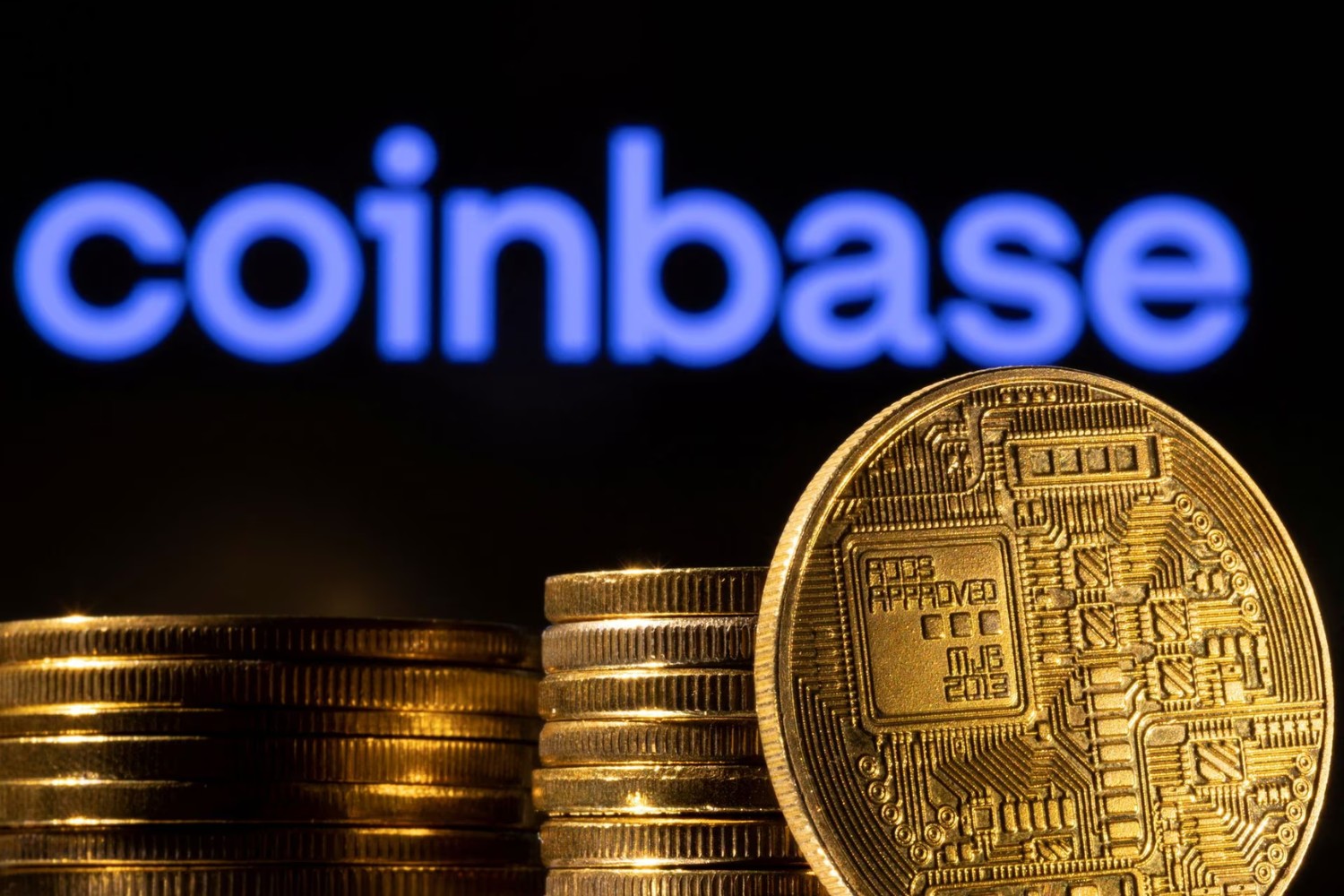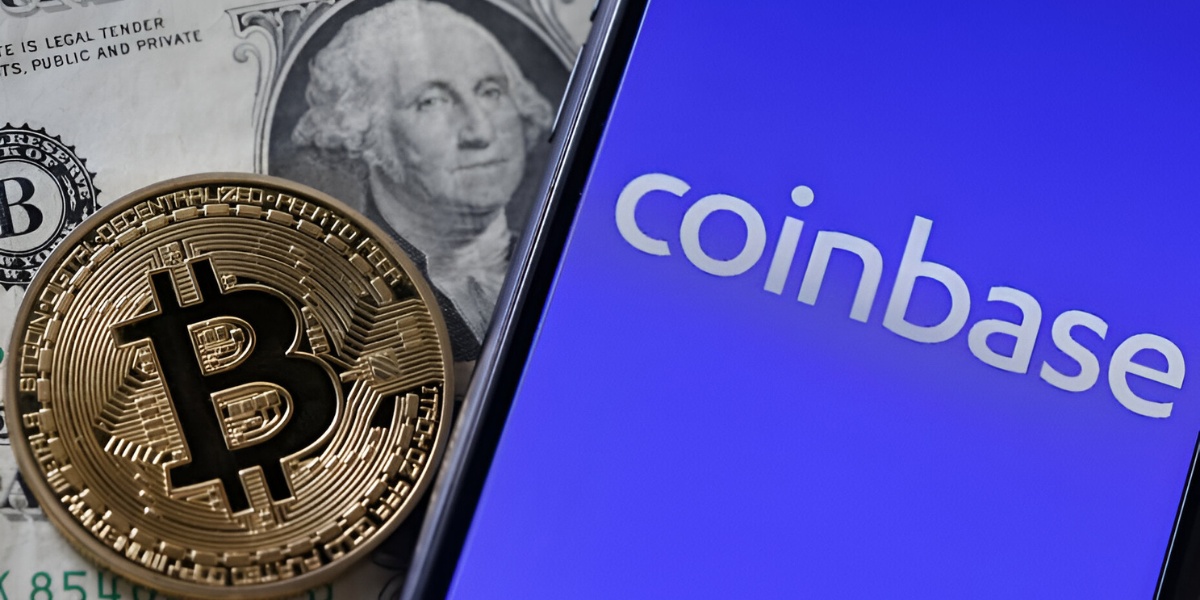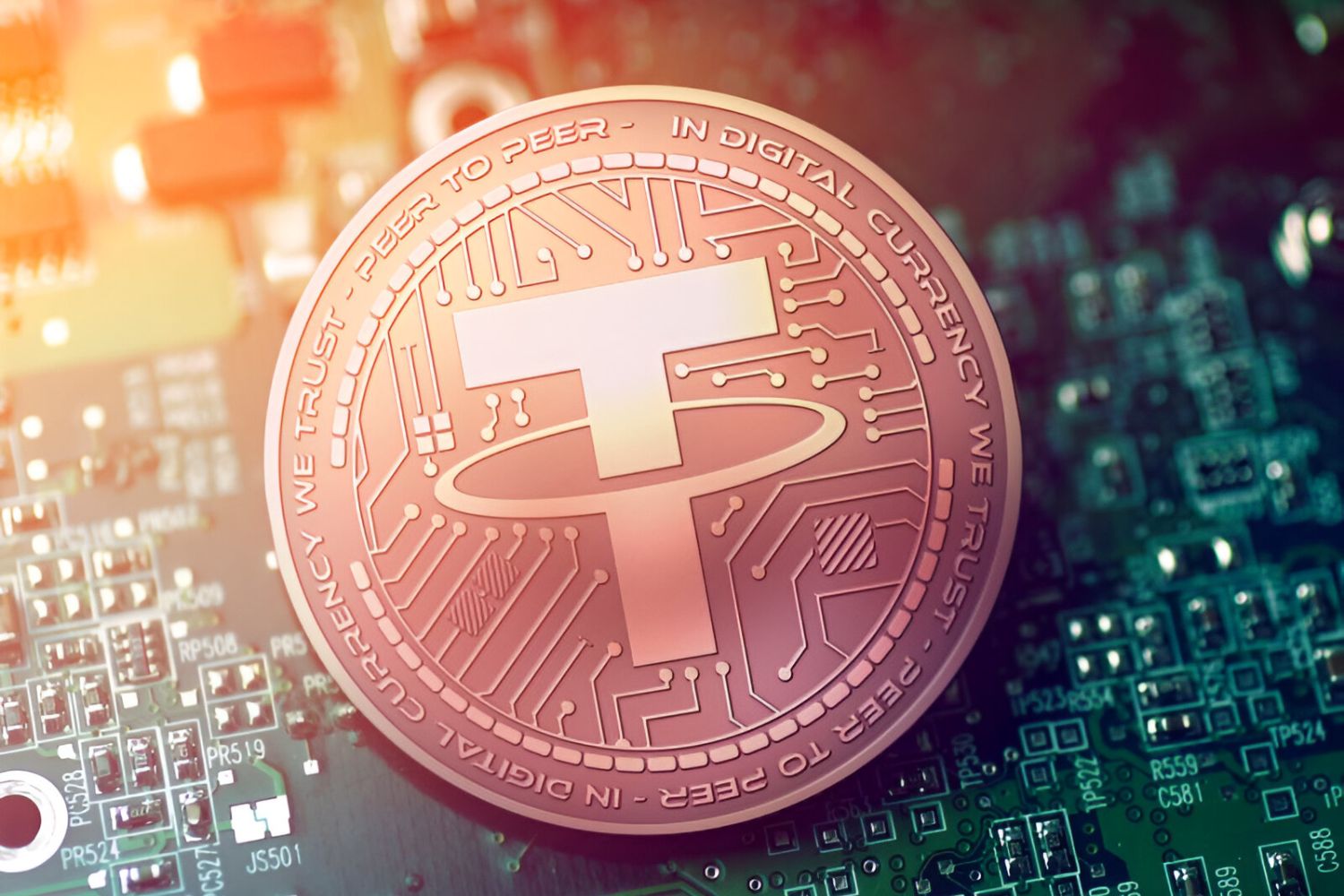Introduction
Stablecoins have emerged as a popular digital asset in the rapidly evolving world of cryptocurrencies. As the name suggests, stablecoins are designed to have a stable value, unlike other volatile cryptocurrencies such as Bitcoin and Ethereum. They are pegged to a stable asset, usually a national currency like the US dollar or backed by a reserve of assets such as gold or other cryptocurrencies.
The primary purpose of stablecoins is to provide a reliable and stable means of transacting and storing value in the digital space. While traditional cryptocurrencies have gained traction for their decentralized nature and potential for high returns, their volatility has posed challenges for mainstream adoption. Stablecoins aim to bridge this gap by maintaining a steady value that is more predictable and less prone to wild price swings.
Stablecoins operate on blockchain technology, which ensures transparency, security, and efficient peer-to-peer transactions. They offer a range of benefits that make them an attractive alternative for both individuals and businesses looking for stability in a volatile market.
In this article, we will explore the concept of stablecoins in detail and highlight their advantages. We will also discuss some of the popular use cases and the potential future of stablecoins in the ever-evolving landscape of digital finance.
Definition and Functioning of Stablecoins
Stablecoins are a type of cryptocurrency that is designed to maintain a stable value by being pegged to an underlying asset or a basket of assets. This underlying asset can be a traditional fiat currency like the US dollar or a commodity like gold. Stablecoins can also be collateralized by other cryptocurrencies or algorithms that automatically adjust the supply to keep the value stable.
The functioning of stablecoins varies depending on their design. The most common types of stablecoins are:
- Collateralized Stablecoins: These stablecoins are backed by reserves of real-world assets, usually fiat currencies or commodities. The issuers hold these reserves in bank accounts or vaults to ensure that the stablecoin value is fully collateralized.
- Algorithmic Stablecoins: These stablecoins rely on smart contracts and algorithms to maintain their stability. They use mechanisms like buying and selling tokens on secondary markets or adjusting the supply based on demand to control the price fluctuations.
- Hybrid Stablecoins: These stablecoins combine elements of both collateralized and algorithmic models to achieve price stability. They may have reserves of assets as well as employ algorithmic mechanisms to maintain the stablecoin value.
Stablecoins offer several advantages over traditional cryptocurrencies. Firstly, their stable value makes them more suitable for everyday transactions. Users can confidently hold and use stablecoins without worrying about their value drastically changing within a short span of time.
Secondly, stablecoins provide a hedge against market volatility. Traders and investors can use stablecoins as a safe haven during periods of crypto market volatility. They can easily convert their cryptocurrencies into stablecoins to protect their value before the market stabilizes.
Furthermore, stablecoins enable faster and more efficient cross-border transactions. Traditional remittance services often involve long processing times and high fees. With stablecoins, individuals and businesses can transfer funds across borders instantly and at a fraction of the cost, making them an attractive option for international remittances.
In summary, stablecoins are innovative digital assets that offer stability and reliability in the volatile world of cryptocurrencies. Whether as a means of exchange, a store of value, or a hedge against market fluctuations, stablecoins provide users with the confidence and convenience needed to navigate the digital financial ecosystem.
Advantages of Stablecoins
Stablecoins offer a range of advantages that make them an attractive option in the world of cryptocurrencies. Let’s explore some of the key benefits:
- Stability and Reduced Volatility: Unlike traditional cryptocurrencies, which are highly volatile, stablecoins maintain a stable value. This stability makes them ideal for everyday transactions and provides users with confidence in the value of their digital assets.
- Ease of Transactions: Stablecoins are designed for seamless and efficient transactions. Users can send and receive stablecoins quickly and at a low cost, making them a reliable payment method both locally and internationally.
- Security and Privacy: Stablecoins leverage the security and privacy features of blockchain technology. Transactions conducted with stablecoins are decentralized, transparent, and resistant to fraud, providing users with a secure way to store and transfer their funds.
- Global Accessibility and Financial Inclusion: Stablecoins can be accessed and used by anyone with an internet connection, providing financial services to unbanked populations worldwide. This opens up opportunities for individuals and businesses to participate in the global digital economy.
- Lower Transaction Costs: Stablecoins enable fast and low-cost transactions, especially for cross-border payments. Traditional remittance methods often involve high fees and lengthy processing times. Stablecoins provide a more efficient alternative for international transfers.
- Decentralization and Transparency: Stablecoins operate on blockchain technology, which is decentralized and transparent. This decentralization eliminates the need for intermediaries and allows users to have control over their funds without relying on traditional financial institutions.
Overall, stablecoins offer a reliable and user-friendly alternative to traditional cryptocurrencies. Their stability, ease of use, security, and global accessibility make them an attractive choice for a variety of use cases, from everyday transactions to international remittances and participation in decentralized finance (DeFi) platforms.
Next, let’s explore some of the popular use cases of stablecoins in more detail.
Stability and Reduced Volatility
One of the key advantages of stablecoins is their stability and reduced volatility compared to other cryptocurrencies. While cryptocurrencies like Bitcoin and Ethereum are known for their price fluctuations, stablecoins maintain a steady value, often pegged to a traditional fiat currency like the US dollar.
This stability makes stablecoins an attractive option for individuals and businesses who want to transact or hold digital assets without the risk of significant value fluctuations. By offering a stable value, stablecoins provide users with a reliable medium of exchange and store of value, similar to traditional fiat currencies.
Reduced volatility is particularly important for merchants and businesses who accept digital payments. By accepting stablecoins, merchants can avoid the volatility risks associated with accepting other cryptocurrencies that may experience sudden and significant price fluctuations. This stability encourages wider adoption and acceptance of stablecoins as a viable payment method.
Moreover, the stability of stablecoins can potentially reduce the barriers to entry for individuals new to the world of cryptocurrencies. The fear of price volatility often deters people from investing or using cryptocurrencies for everyday transactions. Stablecoins provide a more accessible and less risky entry point, allowing individuals to transact and engage with digital assets in a reliable and predictable manner.
Another advantage of stablecoins’ stability is its potential for use in hedging strategies and risk management. Traders and investors can easily convert their volatile cryptocurrencies into stablecoins during periods of market uncertainty. This allows them to preserve the value of their assets and mitigate potential losses. Stablecoins serve as a temporary safe haven until the market stabilizes, providing a quick and efficient way to manage risk in the digital asset space.
In summary, the stability and reduced volatility of stablecoins make them an ideal choice for individuals, businesses, and traders seeking a reliable and predictable medium of exchange and store of value within the realm of cryptocurrencies. Their stability not only encourages wider adoption but also opens up opportunities for risk management and hedging strategies in a rapidly evolving digital financial ecosystem.
Ease of Transactions
Stablecoins offer a seamless and efficient solution for digital transactions, providing users with ease and convenience in their everyday financial activities. Here are the advantages of stablecoins in terms of ease of transactions:
Instant Transactions: Traditional financial transactions often involve intermediaries and can take several days to complete. However, stablecoin transactions occur directly on the blockchain, enabling near-instantaneous transfers. Users can send and receive stablecoins within seconds, allowing for quick and efficient transactions.
Low Transaction Fees: Stablecoin transactions typically come with minimal fees compared to traditional financial systems. The decentralized nature of stablecoins reduces the reliance on intermediaries, resulting in lower transaction costs. This makes stablecoins a cost-effective option for both small-scale and large-scale transactions.
Accessibility: Stablecoins are accessible to anyone with an internet connection. Users can send and receive stablecoins worldwide without the need for a traditional bank account. In regions where access to banking services is limited, stablecoins offer an inclusive financial solution for individuals and businesses.
User-Friendly Wallets: Wallets designed for stablecoin storage and transactions are typically user-friendly and easy to navigate. Users can manage their stablecoins efficiently through secure digital wallets that provide intuitive interfaces and a seamless user experience. This ease of use enhances the overall convenience of stablecoin transactions.
Global Reach: Stablecoins transcend geographical boundaries, enabling cross-border transactions with ease. By eliminating the need for traditional remittance services, stablecoins offer a fast and cost-effective way to send money internationally. Individuals can bypass the lengthy processes associated with traditional banking systems and settle transactions directly using stablecoins.
Smart Contract Integration: Stablecoins are built on blockchain technology, which allows for smart contract integration. Smart contracts automate transactions, enforce agreements, and enable the execution of predefined conditions. This not only streamlines transactions but also provides added security and transparency in the process.
Ease of transactions is a crucial factor in the adoption and use of any financial instrument. Stablecoins excel in this aspect by providing users with an efficient, accessible, and cost-effective means of transacting and storing value. Businesses and individuals can take advantage of stablecoins for a variety of purposes, including online purchases, cross-border transactions, and peer-to-peer transfers, enjoying the benefits of fast, reliable, and user-friendly digital transactions.
Security and Privacy
Stablecoins offer enhanced security and privacy features, leveraging blockchain technology to ensure the integrity of transactions and protect user data. Here are the advantages of stablecoins in terms of security and privacy:
Decentralization and Immutable Transactions: Stablecoins operate on decentralized blockchain networks, where transactions are recorded across multiple nodes. This decentralized nature makes it extremely difficult for malicious actors to manipulate transactions or tamper with the transaction history. Every transaction is recorded on the blockchain and is immutable, providing transparency and security.
Cryptographic Security: Stablecoins employ cryptographic techniques to secure transactions and wallets. Public-key cryptography ensures that transactions can only be initiated by the rightful owners of the stablecoins. Private keys, which are used to sign transactions, are kept secure and confidential by the users. This cryptographic security protects user funds from unauthorized access or theft.
Privacy Protection: While transactions on the blockchain are transparent, stablecoins can offer varying levels of privacy protection. Some stablecoins, like privacy-focused cryptocurrencies, employ advanced cryptography techniques to obfuscate transaction details, ensuring the privacy of the parties involved. However, it’s important to note that not all stablecoins guarantee complete privacy, and users should be aware of the level of privacy provided by the specific stablecoin they are using.
Resistance to Fraud and Counterfeiting: Stablecoins built on blockchain technology are resistant to fraud and counterfeiting. Each transaction is validated by multiple nodes on the network, ensuring that counterfeit stablecoins cannot infiltrate the system. Additionally, the transparency of the blockchain allows users to verify the authenticity and provenance of stablecoins, reducing the risk of accepting fraudulent digital assets.
Protection Against Financial Instability: Stablecoins backed by reserves, such as fiat currencies or commodities, provide an additional layer of security. The underlying assets held as reserves back the stablecoin’s value, offering stability even in times of market volatility. This helps protect users’ wealth from sudden economic downturns and financial instability.
Given the increasing prevalence of data breaches and privacy concerns, stablecoins provide a secure and private alternative for transacting and storing value. Users can enjoy the advantages of blockchain technology, including decentralized transactions, cryptographic security, and protection against fraud. While privacy levels may vary, the transparency and immutability of stablecoin transactions contribute to a secure digital financial ecosystem.
Global Accessibility and Financial Inclusion
One of the significant advantages of stablecoins is their potential to promote global accessibility and financial inclusion. Here are the key benefits of stablecoins in this regard:
Banking the Unbanked: Traditional banking services are inaccessible to a large portion of the global population, particularly in developing regions. Stablecoins provide an opportunity to bring financial services to the unbanked and underbanked populations. With just an internet connection and a digital wallet, individuals can access stablecoins and participate in the global digital economy.
Borderless Transactions: Stablecoins transcend geographical boundaries, allowing for seamless cross-border transactions. Traditional international remittance services are often expensive and time-consuming. Stablecoins enable individuals and businesses to send and receive funds instantly, bypassing costly intermediaries and reducing transaction fees.
Microtransactions: Stablecoins are divisible into smaller units, making them suitable for microtransactions. This opens up opportunities for small businesses and individuals to engage in cost-effective and efficient digital transactions, even for low-value purchases or transfers.
Financial Empowerment: Stablecoins provide individuals with greater control over their finances. They can hold, transact, and store value without relying on traditional financial institutions. This financial empowerment allows individuals to manage their funds more efficiently and participate in the global economy on their own terms.
Reduced Barriers to Entry: Stablecoins eliminate barriers to entry for individuals who may not meet the requirements for traditional banking services. Without the need for physical proximity or extensive documentation, stablecoins provide an inclusive financial solution for individuals who may face challenges accessing traditional banking systems.
Mobile Payment Solutions: Many stablecoin wallets are designed to be compatible with mobile devices, making them accessible to individuals who primarily rely on smartphones for their financial transactions. This is particularly important in regions where smartphone penetration is high, but traditional banking infrastructure is lacking.
By promoting global accessibility and financial inclusion, stablecoins have the potential to empower individuals and businesses worldwide. They offer an alternative financial system that is accessible, cost-effective, and independent of geographical limitations. Stablecoins can contribute to reducing the financial inclusion gap and unlocking economic opportunities for underserved populations around the world.
Use Cases of Stablecoins
Stablecoins have gained popularity due to their stability and practicality in various use cases within the digital ecosystem. Here are some of the prominent use cases of stablecoins:
Investing and Trading: Stablecoins serve as a bridge between the traditional and digital financial worlds, providing stability to investors and traders. By converting volatile cryptocurrencies into stablecoins during market downturns, investors can preserve the value of their assets. Additionally, stablecoins provide a convenient medium for trading and accessing various digital assets without the need to convert back into fiat currencies.
International Remittances: Traditional remittance methods are often costly and time-consuming. Stablecoins offer a fast and affordable alternative, particularly in cross-border transactions. By utilizing stablecoins, individuals can send and receive funds internationally, bypassing expensive intermediaries and reducing transaction fees. This efficient remittance solution is particularly valuable for those who rely on international transfers for financial support.
Decentralized Finance (DeFi): Stablecoins play a crucial role in decentralized finance (DeFi) applications. They provide a stable unit of account within decentralized lending, borrowing, and yield farming protocols. Stablecoins serve as collateral for loans, ensuring that borrowers can take advantage of the benefits of DeFi while mitigating the risk of price volatility associated with traditional cryptocurrencies.
Online Commerce: Stablecoins offer a reliable and convenient payment solution for online merchants. By accepting stablecoins, businesses can avoid the volatility risks associated with other cryptocurrencies. Stablecoins provide a stable unit of account, allowing sellers to price their products and services without the need for constant adjustments due to fluctuating cryptocurrency values.
Financial Services for the Unbanked: Stablecoins provide an inclusive financial solution for the unbanked and underbanked populations. People without access to traditional banking services can use stablecoins to store, send, and receive funds. It enables them to participate in the global digital economy, gain financial independence, and access basic financial services such as savings and payments.
Tokenized Assets: Stablecoins can be used to represent real-world assets through tokenization. This allows for increased liquidity and accessibility to assets such as real estate, precious metals, or even traditional fiat currencies. Stablecoins backed by these tokenized assets provide a transparent and efficient way to trade and invest in assets that were previously illiquid or inaccessible to everyday investors.
These are just a few examples of the diverse use cases of stablecoins. As the cryptocurrency and blockchain industries continue to innovate, stablecoins are likely to find new applications and contribute significantly to the transformation of traditional financial systems.
Investing and Trading
Stablecoins have become an essential tool in the world of cryptocurrency investing and trading. With their stability and pegged value, stablecoins offer several benefits for investors and traders. Here are some key use cases of stablecoins in investing and trading:
Hedging Against Volatility: Investors in the cryptocurrency market are often exposed to high levels of price volatility. Stablecoins provide a reliable means for investors to hedge against this volatility. By converting their cryptocurrencies into stablecoins during market downturns or periods of uncertainty, investors can preserve the value of their assets. This hedging strategy allows them to mitigate potential losses and maintain stability in their portfolio.
Arbitrage Opportunities: Stablecoins play a crucial role in cryptocurrency arbitrage, which involves exploiting price differences between different exchanges or trading pairs. Traders can use stablecoins to exploit price discrepancies by quickly converting their funds into stablecoins and taking advantage of arbitrage opportunities. The stability of stablecoins helps streamline the arbitrage process and allows traders to maximize their profits.
Liquidity in Trading: Stablecoins provide liquidity and facilitate seamless transactions in digital asset trading. Traders can utilize stablecoins as an intermediary during exchanges, allowing them to quickly move funds between different cryptocurrencies without going through the traditional banking system. This fast and efficient process enhances liquidity and enables traders to take advantage of various trading opportunities in the cryptocurrency market.
Access to Diverse Trading Pairs: Stablecoins serve as a common base pair in many cryptocurrency exchanges, opening up a wide range of trading options. Investors and traders can easily convert their volatile cryptocurrencies into stablecoins and gain access to a broader range of tradable assets. This enhances market accessibility and provides opportunities for diversification, as stablecoins act as a bridge between different cryptocurrencies and fiat currencies.
Avoiding Fiat Conversion: Stablecoins allow traders to bypass the need for converting cryptocurrencies into fiat currencies. This eliminates the complexities and costs associated with traditional banking systems. Traders can easily move in and out of positions using stablecoins, making their trading activities more flexible and efficient.
Stable Value for Investments: Stablecoins provide stability to investors who wish to hold their investments in a digital format. These investors can avoid the risk of keeping their assets in volatile cryptocurrencies while still being able to access the benefits of digital assets. Stablecoins act as a secure store of value, enabling investors to protect their funds from price fluctuations and maintain a more predictable investment portfolio.
Overall, stablecoins have become an integral part of investing and trading in the cryptocurrency market. Their stability, liquidity, and ability to mitigate price volatility provide investors and traders with a reliable tool to navigate the dynamic and fast-paced world of digital asset investment and trading.
International Remittances
Stablecoins have emerged as a game-changer in the realm of international remittances, offering a fast, secure, and cost-effective solution for transferring funds across borders. Here are some key advantages of stablecoins in international remittances:
Speed and Efficiency: Traditional international remittance services often involve lengthy processing times, causing delays in receiving funds. Stablecoins facilitate near-instantaneous transactions, allowing individuals to send and receive funds internationally in a matter of seconds. This speed and efficiency are particularly essential for individuals who rely on these funds for daily expenses or emergencies.
Cost-Effectiveness: Sending money across borders using traditional remittance methods can be expensive, with high fees and unfavorable exchange rates. Stablecoins bypass the need for intermediaries and costly banking fees, significantly reducing transaction costs. Since stablecoins operate on decentralized blockchain networks, individuals can enjoy lower fees and better exchange rates, ensuring more of their hard-earned money reaches its intended destination.
Financial Inclusion: Stablecoins have the potential to provide financial services to the unbanked and underbanked populations worldwide. Many individuals in developing regions lack access to traditional banking services, making it challenging to send and receive money internationally. Stablecoins offer a decentralized and accessible solution, allowing these individuals to participate in the global financial system and receive remittances from abroad without the need for a traditional bank account.
Transparency and Security: Stablecoin transactions on the blockchain are transparent and traceable. This transparency ensures that transactions are secure and reduces the risk of fraud or misappropriation of funds. With every transaction recorded on the blockchain, individuals can easily track the movement of their funds, providing them with peace of mind and financial security.
Flexibility in Conversion: Stablecoins provide flexibility in converting funds between different currencies. Individuals receiving remittances can easily convert stablecoins to their local currency or another preferred currency, reducing the need for multiple conversions and associated fees. This flexibility empowers recipients to choose the most convenient method for utilizing their funds.
Accessibility: Stablecoins are accessible to anyone with an internet connection, making them an ideal option for remittances to areas with limited banking infrastructure. Instead of depending on physical bank branches or remittance centers, individuals can send and receive stablecoins directly through digital wallets, removing geographical barriers and ensuring seamless accessibility.
Overall, stablecoins have revolutionized the landscape of international remittances, offering individuals a faster, more cost-effective, and inclusive way to send and receive money across borders. As stablecoins continue to gain traction and adoption, they have the potential to transform the remittance industry and improve the lives of millions by providing secure and affordable financial services.
Decentralized Finance (DeFi)
Stablecoins play a pivotal role in the rapidly expanding world of decentralized finance (DeFi). DeFi refers to a suite of financial applications and platforms built on blockchain networks that aim to provide open and permissionless financial services. Here are some key ways stablecoins contribute to the growth and development of DeFi:
Lending and Borrowing: Stablecoins act as a stable unit of account and collateral within DeFi lending and borrowing protocols. Users can deposit stablecoins as collateral to borrow other cryptocurrencies or stablecoins. This allows users to unlock the value of their stablecoins without liquidating their holdings, providing them with access to additional funds for investment or other purposes.
Yield Farming and Staking: Stablecoins are often utilized in yield farming and staking strategies within the DeFi ecosystem. Yield farming involves users leveraging their stablecoins by providing liquidity to decentralized exchanges or liquidity pools. In return, users earn additional rewards in the form of other cryptocurrencies or tokens. Stablecoins provide stability and predictable returns, making them an attractive choice for yield farming strategies.
Decentralized Exchanges (DEXs): Stablecoins serve as an essential trading pair and medium of exchange within decentralized exchanges. Users can easily trade between stablecoins and other cryptocurrencies without the need to rely on traditional fiat currencies. This eliminates the hassle and cost of converting cryptocurrencies into fiat and enhances liquidity within DEXs, enabling seamless and efficient trading.
Stablecoin Swapping: Stablecoin swapping platforms allow users to convert their stablecoins between different protocols or blockchains. These platforms facilitate the exchange of stablecoins tied to one blockchain network to stablecoins on another network. Stablecoin swapping is essential for interoperability within the DeFi ecosystem, enabling users to move funds seamlessly and access various DeFi applications without being limited to a single blockchain network.
Stablecoin-Based Derivatives: Stablecoins provide a stable foundation for the creation of derivative products within DeFi. Stablecoins can be used as underlying assets for derivative contracts, such as futures or options. These stablecoin-based derivatives offer users exposure to the price movements of other assets without actually holding them, allowing for risk management and hedging strategies within DeFi.
Decentralized Stablecoin Governance: Some stablecoins operate under decentralized governance models, giving users the power to participate in decision-making processes. Holders of the stablecoin can vote on proposals to determine changes to the protocol, such as collateral types, stability mechanisms, or adjustments to supply. This decentralized governance model ensures community involvement and enables stablecoins to adapt and evolve based on the consensus of its users.
These are just a few of the many ways stablecoins are utilized within DeFi applications. Their stability, liquidity, and interoperability make stablecoins a vital component of the DeFi ecosystem, unlocking new possibilities for financial innovation and reshaping the way individuals access and interact with traditional financial services.
Future of Stablecoins
The future of stablecoins looks promising, as they continue to gain traction and evolve in the dynamic landscape of digital finance. Here are some key factors that contribute to the potential growth and development of stablecoins:
Regulatory Clarity: As the regulatory framework surrounding cryptocurrencies becomes more defined, stablecoins have the potential to benefit from clear guidelines and regulations. Regulatory clarity instills confidence in investors, businesses, and users, encouraging wider adoption of stablecoins for various use cases. Regulatory compliance also ensures that stablecoin issuers maintain transparency and accountability, ultimately contributing to the stability and credibility of the stablecoin market.
Interoperability and Cross-Chain Integration: Interoperability among different blockchain networks is a critical focus for the development of stablecoins. Promoting seamless cross-chain integration enables stablecoins to traverse different blockchain platforms, providing users with more options and liquidity. Cross-chain stablecoin compatibility could drive increased adoption and liquidity within the decentralized finance (DeFi) ecosystem while unlocking new possibilities for financial innovation and asset management.
Improvements in Scalability and Efficiency: Continued technological advancements in blockchain networks, such as layer-2 solutions and advancements in consensus algorithms, will enhance the scalability and efficiency of stablecoin transactions. Faster transaction speeds, lower fees, and increased capacity can further solidify stablecoins’ position as a practical medium of exchange for everyday transactions and facilitate their integration into traditional financial systems.
Central Bank Digital Currencies (CBDCs) and Stablecoin Collaboration: The rise of central bank digital currencies (CBDCs) presents opportunities for collaboration between CBDCs and stablecoins. By leveraging the benefits of stablecoins, central banks can potentially enhance the accessibility, efficiency, and cross-border capabilities of their digital currencies. The collaboration between CBDCs and stablecoins can foster financial innovation and bridge the gap between traditional fiat currencies and digital assets.
Integration with Traditional Financial Systems: As stablecoins gain mainstream adoption and regulatory acceptance, they have the potential to integrate with traditional financial systems. Collaboration between stablecoin issuers, financial institutions, and payment processors can facilitate the seamless conversion and transfer of stablecoins to and from fiat currencies. This integration can bridge the gap between the digital and traditional financial worlds, making stablecoins more accessible and practical for a broader range of users.
Advanced Smart Contract Functionality: Stablecoins can benefit from increased smart contract functionality, including programmable features, conditional transactions, and decentralized autonomous organizations (DAOs). By leveraging smart contract capabilities, stablecoins can open up new possibilities for automated transactions, dynamic stablecoin supply adjustments, and innovative governance models, leading to greater efficiency, flexibility, and adaptability.
Overall, the future of stablecoins is bound to be dynamic and transformative. As technology advances, regulatory frameworks evolve, and new collaborations emerge, stablecoins are poised to become an integral part of the global financial ecosystem. Their stability, transparency, and versatility position them as a key driver for the widespread adoption of cryptocurrencies and the digitization of traditional financial systems.
Conclusion
Stablecoins have emerged as a significant innovation in the world of cryptocurrencies, offering stability, security, and practicality in the rapidly evolving digital financial ecosystem. These digital assets, pegged to fiat currencies or backed by reserves, provide users with a reliable and predictable means of transacting and storing value.
Throughout this article, we explored the definition and functioning of stablecoins, highlighting their advantages. We discussed how stablecoins offer stability and reduced volatility compared to traditional cryptocurrencies, making them suitable for everyday transactions and minimizing the risks associated with price fluctuations. The ease of transactions offered by stablecoins, including instant transfers and low transaction fees, provides users with a seamless and efficient payment method.
Furthermore, we delved into the security and privacy features of stablecoins, emphasizing their decentralized nature, cryptographic security, and protection against fraud. Stablecoins also contribute to global accessibility and financial inclusion by providing financial services to unbanked populations and facilitating cross-border transactions with speed and cost-effectiveness.
We explored various use cases of stablecoins, such as investing and trading, international remittances, and their integral role in decentralized finance (DeFi) applications. Stablecoins offer stability, liquidity, and interoperability within the DeFi ecosystem, enabling users to access lending and borrowing services, yield farming opportunities, decentralized exchanges, and other emerging financial innovations.
We discussed the future of stablecoins, envisioning their continued growth and development. Regulatory clarity, interoperability, scalability, collaboration with central bank digital currencies (CBDCs), integration with traditional financial systems, and advancements in smart contract functionality are all factors that contribute to the promising future of stablecoins.
In conclusion, stablecoins have revolutionized the way we transact and store value in the digital age. Their stability, practicality, and potential for financial inclusion make them an essential component of the evolving global financial ecosystem. As adoption and innovation continue, stablecoins are poised to play a pivotal role in shaping the future of finance.

























